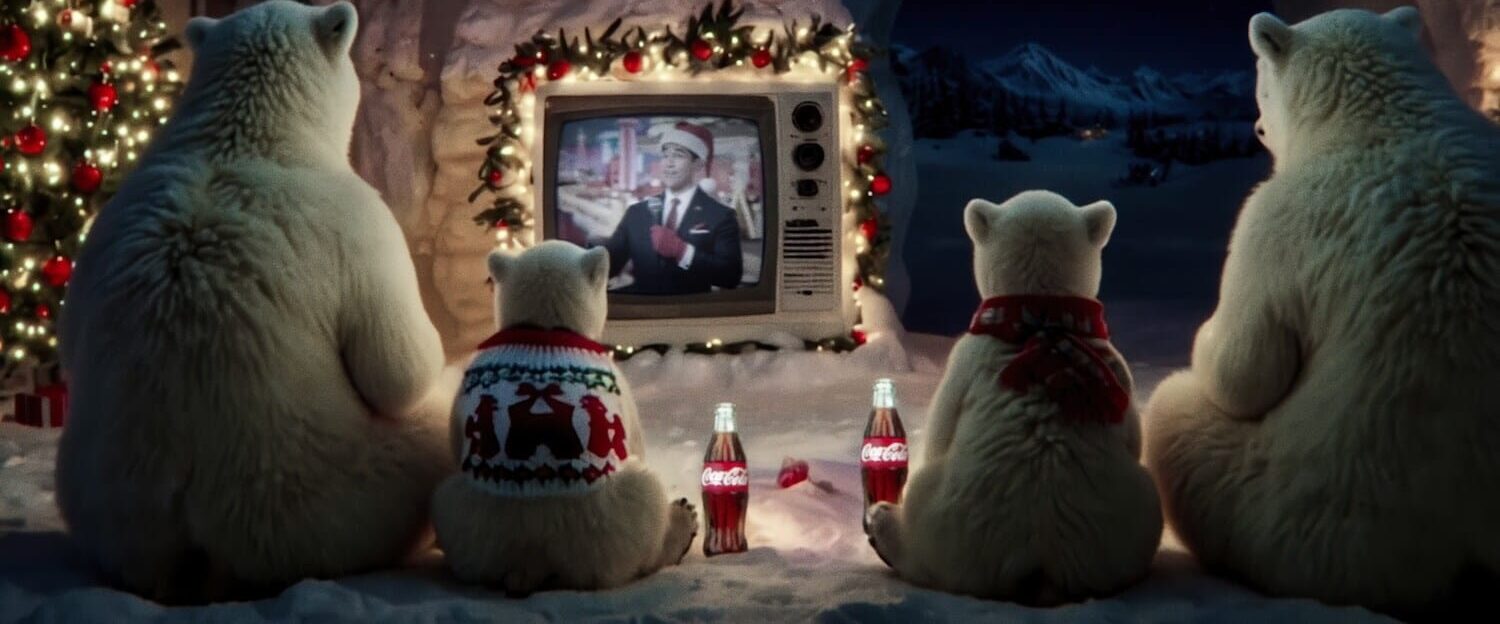Coca-Cola’s decision to remake its iconic 1995 “Holidays Are Coming” Christmas advertisement using artificial intelligence has sparked intense discussions about AI’s role in creative industries. The company’s first AI-generated TV campaign, produced in collaboration with three AI studios – Secret Level, Silverside AI, and Wild Card – has received mixed reactions from consumers and industry professionals.
Technical Implementation
The project utilized multiple AI models including Leonardo, Luma, and Runway, with a late addition of the Kling model for improved human motion rendering. According to Silverside AI, the production:
- Generated 10,000 frames
- Created 5,000 video segments
- Involved over 40 creatives across North America, South America, Europe, and Asia
- Required two months to complete (compared to traditional 12-month timeline)
- Included a live choir for soundtrack recording
Cost and Efficiency Factors
While Coca-Cola’s VP and global head of generative AI, Pratik Thakar, stated the primary motivation wasn’t cost reduction, the production demonstrated clear efficiency benefits:
- Production time reduced from 12 months to 2 months
- Eliminated need for filming in cold weather locations
- Enabled real-time customization for different regions
- Reduced estimated traditional production costs of “several million dollars,” according to Secret Level Founder Jason Zada in an interview with Ad Age.
Industry Expert Perspectives
Jason Zada, Secret Level Founder, shared insights about the production process: “When a new model comes out and you look at running some of your old shots through it, all of a sudden it changes everything.” He noted that creating a single squirrel scene required “a couple hundred” AI generation attempts.
Public Reception
The advertisement has faced criticism across social media platforms:
- The Coca-Cola commercial has reached nearly 60 million views.
- Alex Hirsch, creator of Disney’s “Gravity Falls,” commented: “FUN FACT: @CocaCola is ‘red’ because it’s made from the blood of out-of-work artists!”
According to Marketing Interactive, a survey by media intelligence firm Truescope found:
- 83% of respondents expressed “neutral” sentiments about AI usage in the commercial.
- Consumer focus remained primarily on the advertisement’s message rather than its production method.
Academic Analysis
Professor Neeraj Arora from the University of Wisconsin-Madison explained the backlash to NBC news: “Your holidays are a time of connection, time of community, time to connect with family… But then you throw AI into the mix that is not a fit with holiday timing, but also, to some degree, also Coke, what the brand means to people.”
More Stories
Future Implications
Tim DeStefano, research professor at Georgetown University McDonough School of Business, provided perspective to NBC news on AI’s future in advertising: “Most of the time, when we see the deployment of new technologies, you see the creation of a bunch of new jobs that never existed before… Although there’s some skepticism and acceptance, reluctance to accept these types of ads by consumers, I think that the benefits sort of outweigh that.”
Technical Evolution
The rapid advancement of AI video technology suggests future capabilities:
- New models emerging regularly with improved capabilities
- Enhanced customization options for regional markets
- Integration of brand assets becoming more seamless
- Real-time content modification possibilities
- Reported upcoming AI video tools from OpenAI (Sora), Google DeepMind (Veo), and Meta (Movie Gen)
Industry Impact
The shift toward AI-generated content raises several considerations:
- Job market evolution in creative industries
- Balance between technological efficiency and creative authenticity
- Need for human oversight in AI-generated content
- Cost implications for smaller advertising agencies
- Training requirements for creative professionals
This innovative yet controversial campaign marks a pivotal moment in advertising history, demonstrating both the potential and limitations of AI in creative industries. As technology continues to evolve, the balance between efficiency and authenticity will likely remain a central topic of discussion in the advertising world.






